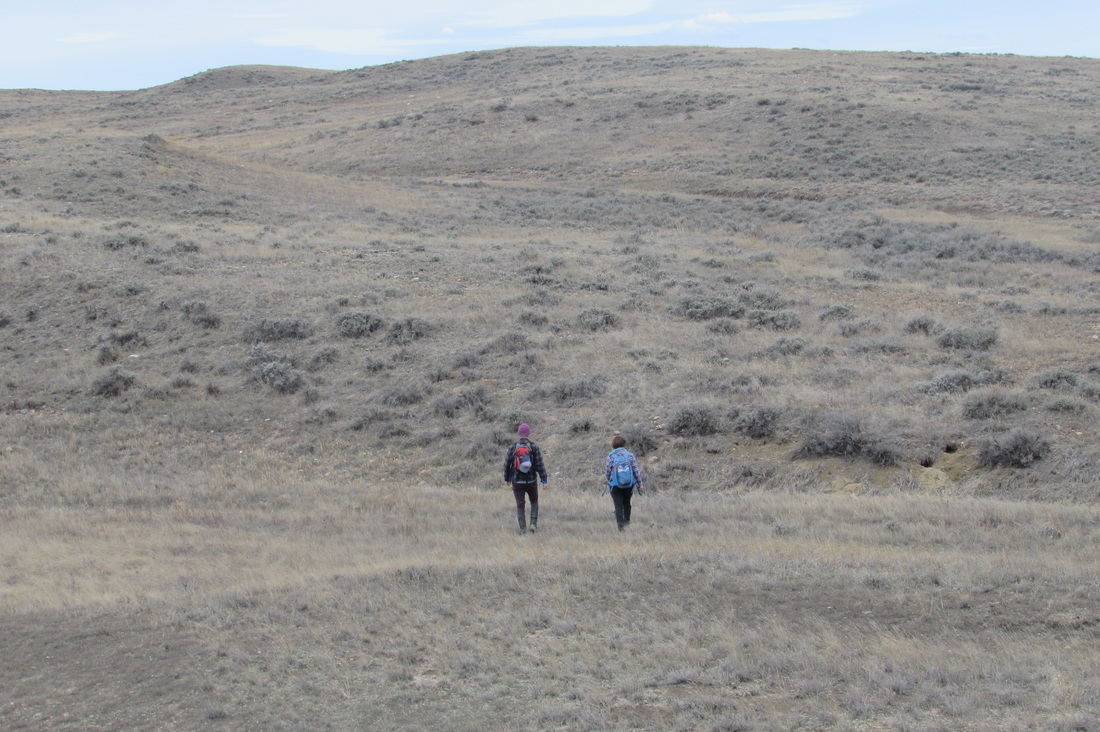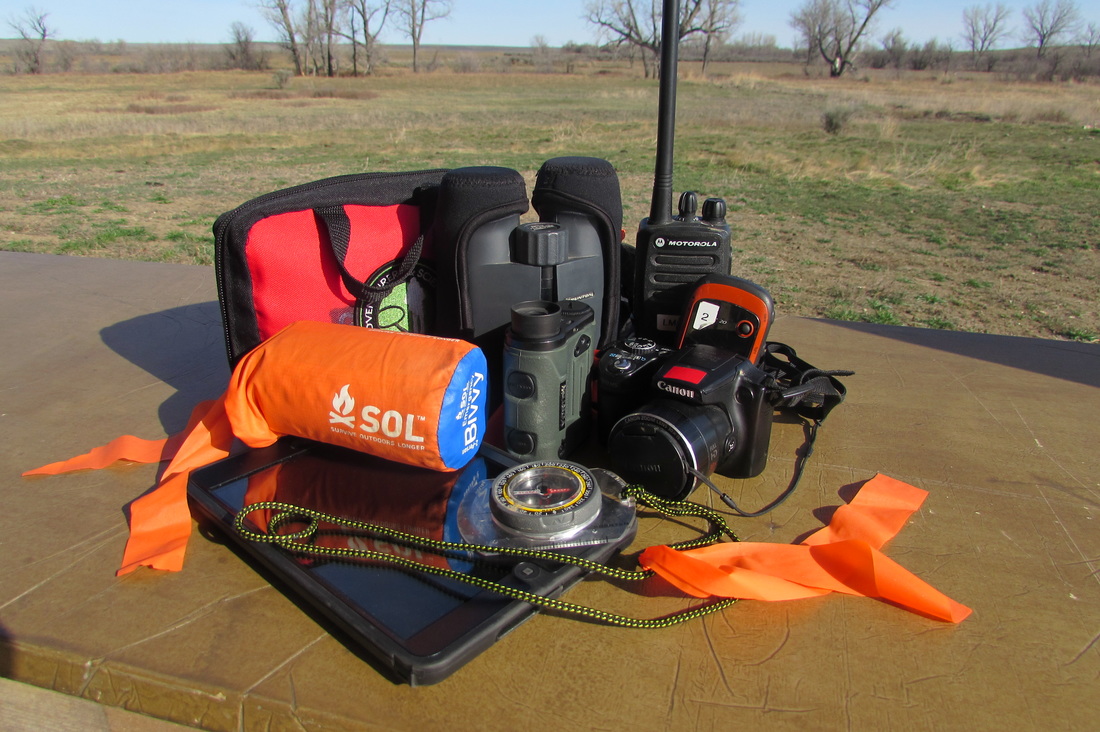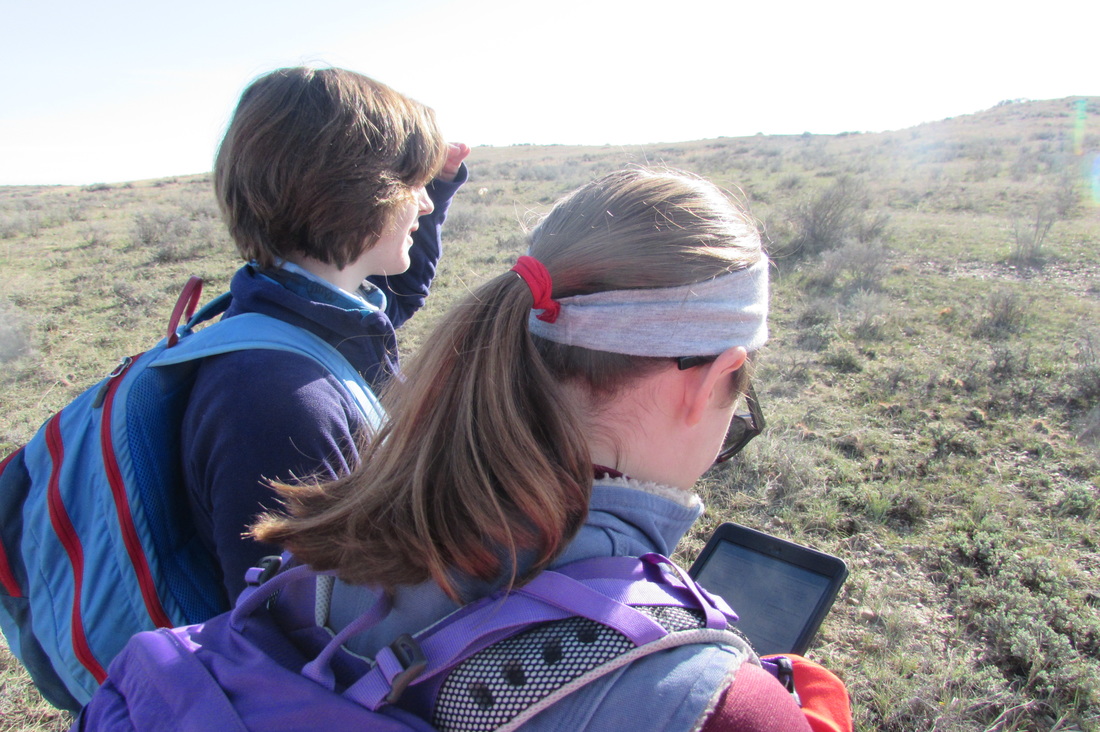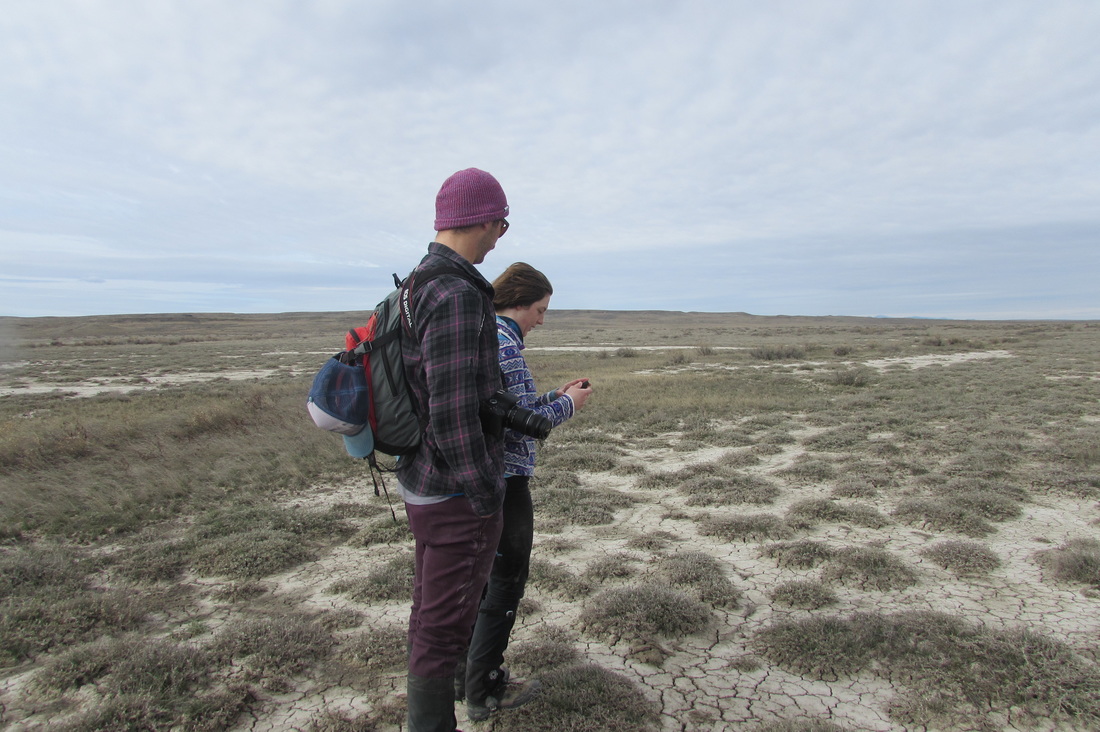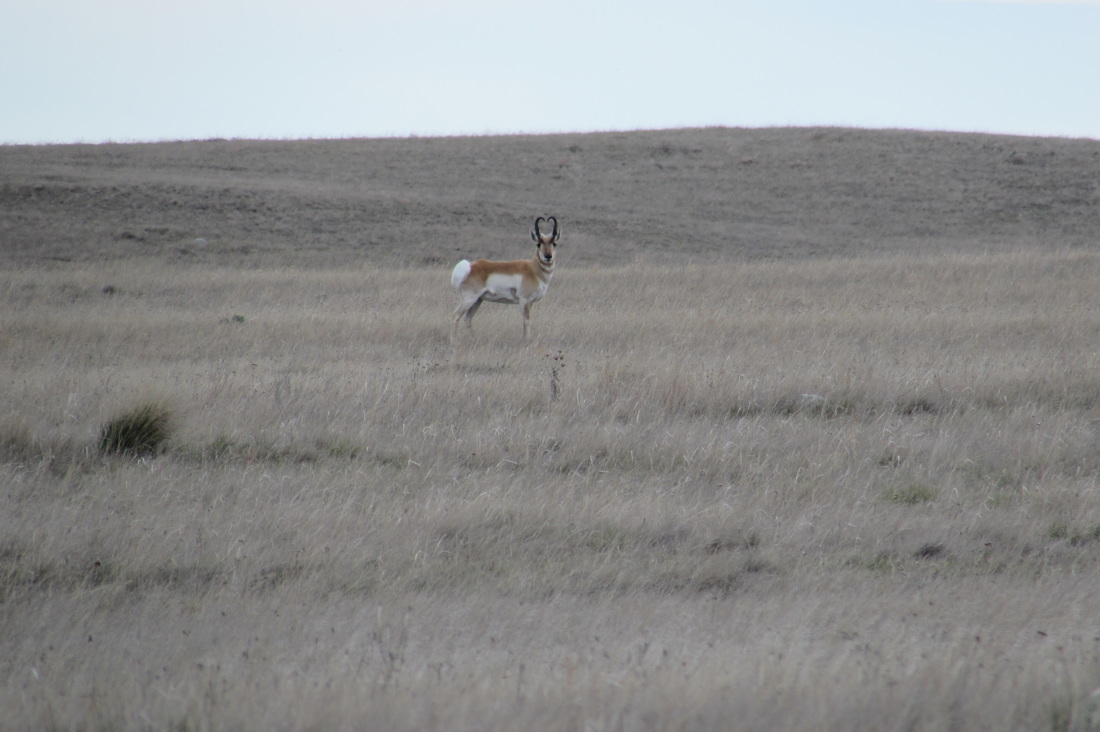By: Stefanie Coxe
Landmark crew member
Landmark crew member
The Adventurers and Scientists for Conservation Landmark crew performs transects year-round to collect baseline data about the wildlife abundance on the American Prairie Reserve. It’s a two-person job, so our four-person team can complete two transects at a time. Preparation begins the night before when we discuss which transects we’ll hike, determine the best driving route, and establish where the vehicle will be parked during our hike.
After a good-night’s sleep, we gather our equipment and emergency kits, then we pile in the car and navigate to our predetermined location. At the beginning of the transects, we start recording spatial data with the GPS and open a form on the iPad to record the transect name, starting location, date and time, and names of the crew members who are completing the transect. Next we walk while counting and documenting occurrences of Landmark’s 29 target species.
Sometimes I spot a deer-shaped object in the distance, and think: “Ooh. There’s an animal on the hill! But what species?” So I take out the binoculars to identify it… and that’s when I realize: it’s just a deer-shaped rock. The Great Plains are full of mirage animals like that.
When we do spot actual animals, we take a picture and record multiple parameters on a digital form. One person uses a rangefinder to determine the animal’s distance from us, while the other uses a compass to take a bearing and identify which direction the animal is traveling. The habitat type at the animal’s location is determined using binoculars and lastly the weather and ground conditions are noted in the form on the tablet.
When we do spot actual animals, we take a picture and record multiple parameters on a digital form. One person uses a rangefinder to determine the animal’s distance from us, while the other uses a compass to take a bearing and identify which direction the animal is traveling. The habitat type at the animal’s location is determined using binoculars and lastly the weather and ground conditions are noted in the form on the tablet.
Pronghorn are by far my favorite species to see on hikes because they are so fascinating and visually stunning. I love the fact that they usually give birth to twins, and because they are endemic to North America, I feel like part of a secret society every time I get to see them.
Once we reach the end of our transect, about four hours later, we stop recording our GPS track and finish the form by filling in the end location and time. After our drive back to the Enrico Education & Science Center, we proofread our data before uploading it via WiFi.
Over the course of a month, Landmark completes 13 ten-mile routes, and we never know what to expect because each transect hike is a different adventure. After a hard day’s work, the only things left to do are reflect on our experiences and speculate what surprises the Great Plains will reveal tomorrow.
Over the course of a month, Landmark completes 13 ten-mile routes, and we never know what to expect because each transect hike is a different adventure. After a hard day’s work, the only things left to do are reflect on our experiences and speculate what surprises the Great Plains will reveal tomorrow.
Learn more about Landmark and other ASC projects on our website, the Field Notes blog, and by following us on Facebook, Twitter, and Instagram.

